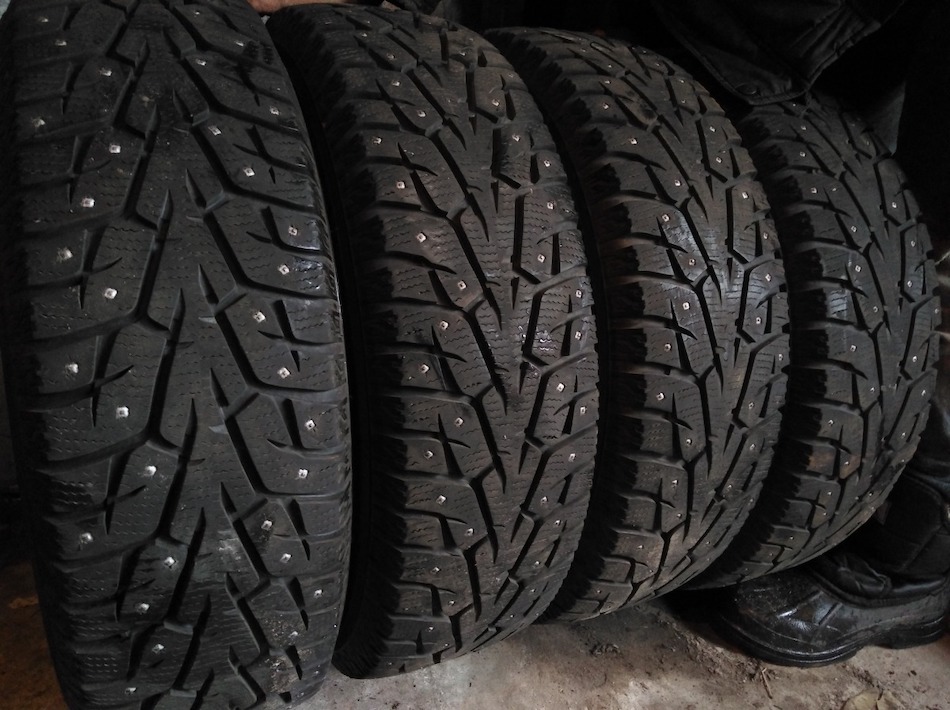
Comparison "Goodyear" and "Yokohama": an overview of rubber
Content
There are also disadvantages - buyers report that there are complaints about the number of spikes (an average of 115 pieces per wheel, competitors have within 200). Friction models of the brand are poorly suited for regions with extremely low winter temperatures, since at -37 ° C and below, the rubber compound becomes too hard.
Tires Yokohama and Goodyear are widely represented in the domestic market. Every year, with the advent of winter, motorists face the problem of choosing tires, including from the products of these two manufacturers. After analyzing the opinions of customers, we answered the question of which rubber is better: Goodyear or Yokohama.
Overview of tires "Goodyear"
Goodyear is an American company. The production of tires entering Russia is based in a number of EU countries, including Germany and Poland.
| Brief characteristics (generalized) | |
| Speed index | T (190 km / h) |
| Types | Studded and Velcro |
| Runflat technology | — |
| Tread | Asymmetrical and symmetrical, directional and non-directional types |
| dimensions | 175 / 65R14 - 255/50 R20 |
| Camera availability | — |
Answering the question of which rubber is better: Yokohama or Goodyear, it should be noted the positive characteristics of Goodyear models:
- range of standard sizes, studded and friction rubber;
- moderate cost;
- snow flotation;
- good directional stability on icy roads (buyers warn that studded models perform better);
- durability of spikes that do not have a tendency to fly out;
- low noise (but it buzzes a lot when running in);
- confident braking on dry icy asphalt.

Goodyear tires
There are also disadvantages - buyers report that there are complaints about the number of spikes (an average of 115 pieces per wheel, competitors have within 200).
Yokohama tire review
The manufacturer Yokohama has Japanese roots, but most of the tires for Russia are produced by Russian tire factories, some varieties are produced by enterprises in Thailand and the Philippines.
| Brief characteristics (generalized) | |
| Speed index | T (190 km / h) |
| Types | Studded and friction |
| Runflat technology | — |
| Tread | Asymmetrical and symmetrical, directional and non-directional types |
| Standard sizes | 175/70R13 – 275/50R22 |
| Camera availability | — |
To find out which rubber is better: Goodyear or Yokohama, let's focus on the positive characteristics of the Japanese manufacturer's products:
- the choice of sizes is wider than that of the American brand, there are many options for budget cars;
- moderate cost;
- handling and directional stability on snow-covered sections of winter roads;
- low noise even with studded models.
Japanese products also have disadvantages:
- grip on clear ice is poor;
- mediocre handling in icy areas.

Yokohama tires
Causes criticism and patency on snow porridge.
Comparison of characteristics
To make it easier to understand which rubber is better: Goodyear or Yokohama, let's compare the characteristics.
| Technical specifications | ||
| Tire brand | Goodyear | Yokohama |
| Places in the ratings of popular auto magazines (“Behind the wheel”, “Klaxon”, etc.) | Rarely drops below 7th position | Regularly ranks 5-6 in the TOP |
| Exchange rate stability | Good in all conditions | Mediocre in icy areas and packed snow |
| Passability on snow slush | Satisfactory | Mediocre |
| Balancing quality | It usually takes 10-15 g per disk | Some wheels do not need weights |
| Behavior on the track at a temperature of 0 ° C and above | mediocre | The car confidently holds the road, but you need to be careful when cornering, not exceeding the speed of 80-90 km / h |
| Softness of movement | Friction and studded models provide driving comfort | The rubber is soft, but the cord is hard to get into road pits - hernias are likely (low profile is highly susceptible to this) |
| Country of Origin | EC | Russia |
Based on the results of the comparison, it is difficult to understand which winter tires are better: Goodyear or Yokohama, since their characteristics are similar.
Hack and predictor Aviator
According to studies by Russian automotive publishers, the preferences of motorists look like 40/60 in favor of Yokohama. This does not mean that the "Japanese" has much better technical characteristics:
- the brand has localized production, which makes it possible to keep the cost of production lower than that of competitors (this is especially noticeable if the tire diameter is higher than R15);
- the company spends more money on advertising, which makes the brand more recognizable.
So the conclusion is ambiguous - the products of both manufacturers are similar, which is why rubber has no pronounced advantages over each other.

